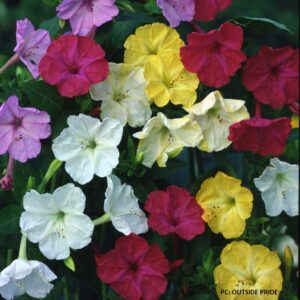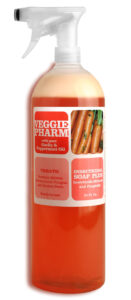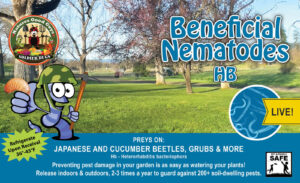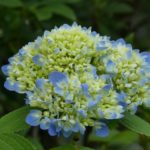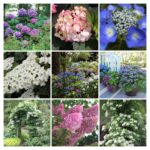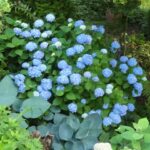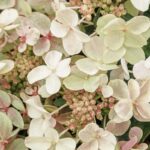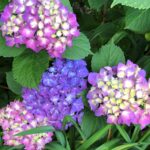Have you found any Japanese Beetles on your hydrangeas yet? I have and I am not surprised. If you follow the Growing Degree Day (GDD) science, you know that these pests appear anywhere from 950-2150 GDDs. For those of you who aren’t familiar with GDDs, here’s a good site/link for you from University of Maryland Extension. GDDs are essentially a way to measure the change in temperatures that are tied to insect development and emergence. The UMaryland site explains it all (probably more than you want to know). We were at 1204 GDD when I first saw them. There was a pair canoodling on my plant. My first instinct was to destroy them which I did.
PLAN ON A TWO PRONGED ATTACK
Now I know some of you just want to apply some compound/chemical to make them go away and/or kill them. Unfortunately, most of those products are harmful to bees and other pollinators as well as soil dwelling microbes. But there are effective options for you that won’t have negative impacts, except on the targeted pests.
Part one is to go after the adults in the current season. Part two is to address the grubs which will take up residence after the feeding is over. That’s where you can make the most headway for the future. But don’t forget that they can and do fly in so stay vigilant.
PART ONE for Japanese Beetles on Hydrangeas
Hand Picking
This is very effective especially in the early morning when cooler temps make Japanese Beetles lethargic. Done early enough in the season, this can reduce egg laying, further decreasing the grub population. You just drop them into a container of soapy water and they perish. Doing this sooner in the season rather than later is also important since when Japanese Beetles find a plant they like, they send out a scent signal (pheromone) so other Japanese Beetles can join the party. Then you are in for it!
Trap Plants
Japanese Beetles are attracted to certain plants. You can use the plants as traps to make hand picking them easier. Some of these plants have the added benefit of being poisonous to the Japanese Beetle. Just be aware that what is poisonous to the Japanese Beetle can be harmful to people and animals as well. Good trap plants are four o’clocks (poisonous), larkspur (poisonous), castor bean (poisonous), borage, marigolds, light colored zinnias, and white roses.
Neem Oil
Neem is an extract from the seeds of Neem trees. It’s biodegradable and breaks down in the soil without harming the environment. Neem is also an effective control against whiteflies, cucumber beetles, aphids and many types of caterpillars. It needs to be applied only under certain conditions. Pay attention to weather and read the directions closely. Recognize that Neem is most effective in cool and damp conditions: it degrades in the sun. Plan to apply after a rain, or when there is morning dew present. Follow label directions.
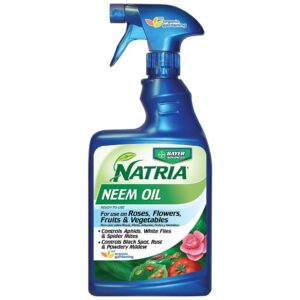
Neem Oil Spray
Veggie Pharm
This product has been reported to kill Japanese Beetles on contact. Do NOT spray in sunlight or when very hot. It at least stuns them so you can hand-pick. Follow label directions.
PART TWO for Japanese Beetles on Hydrangeas
For Part Two, focus on going after the grubs that live in your soil before they emerge as adults to feed on your plants. These treatments are all non-toxic and/or organic and will not harm the garden, environment, or the gardener – only the grubs. Follow the directions on the label.
Bacillus thuringiensis galleriae (Btg)
Btg is a natural soil and foliage dwelling microbe effective against both the adult and grub forms of Japanese Beetle, Oriental beetle, Asiatic garden beetle, European chafer, Northern masked chafer, Southern masked chafer, May and June beetles. It’s available in granular and liquid form. Btg presents no risk to lady beetles, pollinators (butterflies, bees, and parasitoid wasps), aquatic animals, birds, and domestic pets.
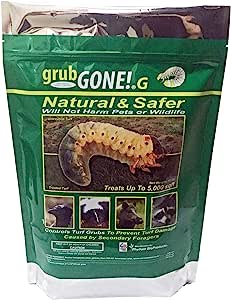
Btg granules
Beneficial Nematodes
Beneficial nematodes are microscopic parasitic worms, many of which benefit our environment. Heterorhabditis bacteriophora is parasitic to Japanese Beetle grubs but harmless to other plants, insects and animals. They don’t have any shelf life since they are live organisms so when you get them you need to act quickly. TIMING OF APPLICATION IS CRITICAL. Follow label directions.
Milky Spore Disease
Bacillus popilliae (Milky Spore Disease) is a naturally occurring disease of Japanese Beetle grubs which is not harmful to humans or other creatures. There are several commercial versions available: one is granular for soil application, another is a dust you use on the plants themselves. Grubs eat leaves and roots which have been treated with the spores, become infected with the disease, die, decompose and then release more spores into the soil. This is not a quick fix as it can take up to two seasons to significantly reduce populations. It is most effective in zones 6 and warmer and can provide years of protection once established. Follow label directions. TIMING OF APPLICATION IS CRITICAL.
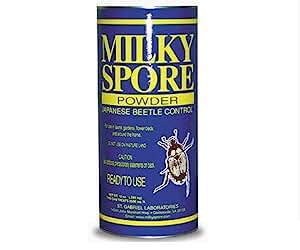
Milky Spore Powder
JAPANESE BEETLE TRAPS
Notice that I didn’t recommend using commercially available Japanese Beetle traps. That’s because those traps (which are very effective) actually will draw the insect to your plant/property. You’ll end up with more beetles than if you didn’t have the trap. If you can set the trap up very far away, you might consider it. But then you have to remember to empty it regularly or else you will draw predators like skunks who like to eat the beetles. YUK!!!
All of the above should give you a good start on handling Japanese Beetles on your hydrangeas (and throughout your garden). Those of you who have my international best selling book, Success With Hydrangeas can simply go the section where I cover this in greater detail.
HYDRANGEAS AND COLD TOLERANCE
I recently had to opportunity to do a podcast with Joe Lamp’l, the “Joe” of Joe Gardener. As one of the country’s most recognized and trusted leaders in gardening and green-living, I often look to Joe via his many communication vehicles (podcasts, classes, symposiums, etc.) for guidance on an array of gardening topics/issues. So this time around we discussed hydrangeas and cold tolerance, specifically the impact of weather and what we can do about it. Here is the link to listen to this recording.
Happy Fourth of July and thanks for reading.
6 Secrets for Stunning Hydrangea Flowers
Get my FREE mini-guide with 6 fool-proof tips showing how to grow hydrangeas that produce the most amazing flowers.
No spam - I promise!
